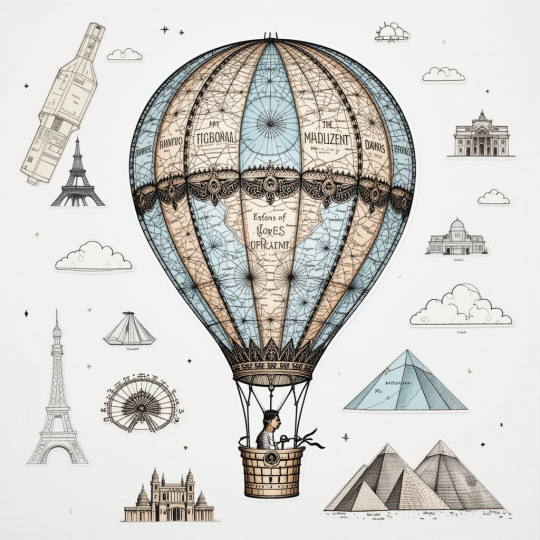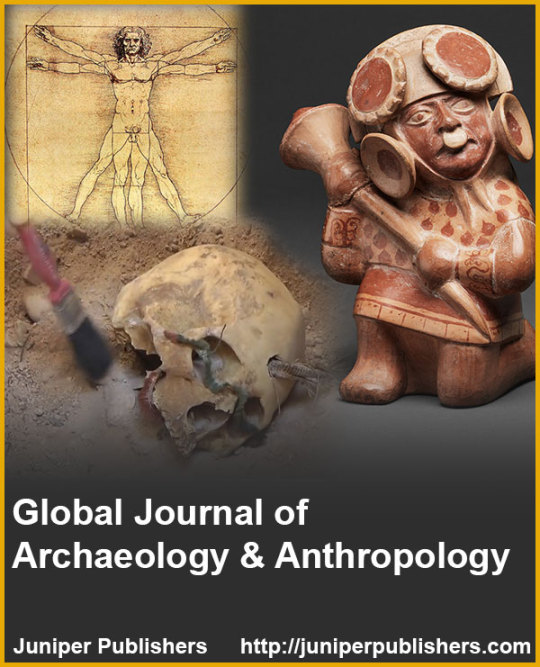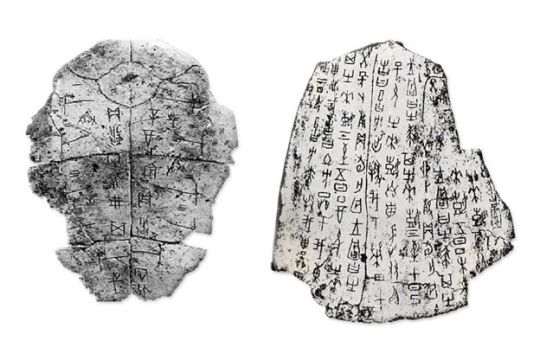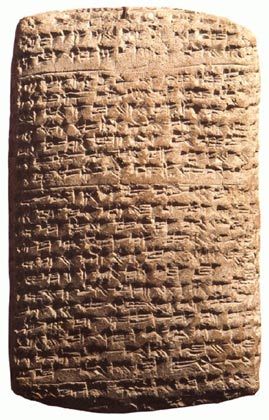#Print Pyramid Stars Pattern In C
Explore tagged Tumblr posts
Text
Hot Air Balloon Drawing Ideas for Kids and Adults
Hot Air Balloon Drawing Ideas can be incredibly creative and vibrant, offering many ways to depict this iconic scene. You can explore different landscapes in the background, such as mountains, clouds, or sunsets, to enhance the beauty of the balloon. Experiment with whimsical designs like balloons shaped as animals, hearts, or objects. You might try a vintage-style hot air balloon with intricate patterns and colors. Incorporating other elements like a flying bird, a scenic town below, or a starry sky could also add charm to the drawing. Let your imagination soar with unique Hot Air Balloon Drawing Ideas that capture the thrill of flight.
Hot Air Balloon Drawing Ideas
Hot air balloons are a fantastic subject for artists of all ages! They offer endless creative possibilities with their vibrant colors, unique shapes, and dreamy backgrounds. Below are fun and easy Hot air balloon sketch ideas for kids and more detailed, artistic versions for adults.
1. Simple & Cute Hot Air Balloons (For Kids)
A. Basic Balloon Shape
Step 1: Draw a large oval or upside-down teardrop for the balloon.
Step 2: Add a small rectangle or trapezoid at the bottom for the basket.
Step 3: Connect them with straight or slightly curved lines for ropes.
Step 4: Decorate with stripes, polka dots, or zigzags.

B. Animal-Shaped Balloons
Turn the balloon into an animal:
Panda Balloon – Black and white with panda ears on top.
Bunny Balloon – Add long ears and a fluffy tail.
Dinosaur Balloon – Give it spikes and a tiny tail.

C. Rainbow Balloon
Divide the balloon into sections and color each part in rainbow shades (red, orange, yellow, green, blue, purple).
D. Star & Moon Balloon
Draw a crescent moon-shaped balloon with a star basket, perfect for a nighttime theme.
E. Hot Air Balloon with a Face
Add big, cartoonish eyes and a smile to the balloon for a fun, personified look.

2. Creative & Detailed Hot Air Balloons (For Adults)
A. Realistic Hot Air Balloon
Use shading techniques to create a 3D effect.
Add realistic fabric wrinkles and a woven basket texture.
Include shadows underneath for depth.
B. Vintage Hot Air Balloon
Draw an old-fashioned balloon with classic patterns (floral, paisley, Victorian designs).
Add intricate ropes and a wooden basket.
C. Fantasy-Themed Balloons
Steampunk Balloon – Add gears, metallic finishes, and a brass gondola.
Sky Whale Balloon – Instead of a traditional balloon, draw a floating whale with a basket.
Fairy Tale Balloon – Design a balloon shaped like a castle or a giant lantern.

D. Hot Air Balloon in a Landscape
Draw a scenic background with:
Rolling hills and tiny houses below.
A sunset sky with warm oranges and pinks.
Clouds and birds flying alongside the balloon.
E. Geometric & Abstract Balloons
Use triangles, hexagons, or chevron patterns for a modern look.
Experiment with watercolor splashes or gradient shading.
F. Hot Air Balloon Collage
Create a cluster of multiple balloons in different sizes and patterns.
Overlap them slightly for a dynamic composition.

3. Unique Hot Air Balloon Themes
Seasonal Balloons (e.g., pumpkin-shaped for Halloween, snowflake-themed for winter).
Travel-Themed Balloon – Decorate with map prints or landmark stickers (Eiffel Tower, pyramids).

Galaxy Balloon – Fill the balloon with a starry night sky or nebula colors.

Final Tips:
✔ Kids: Use bright markers, crayons, or stickers for extra fun. ✔ Adults: Try mixed media (watercolor + ink) for a polished effect. ✔ All Ages: Add personal touches—maybe a favorite color or pattern!
0 notes
Text
Six - Print Pyramid Stars Pattern In C#
Six – Print Pyramid Stars Pattern In C#
Print Pyramid Stars Pattern In C#Pattern# 1 * *** ************public void PrintPyramid(int rows) { int temp; temp = rows; for (int i = 1; i <= rows; i++) { for (int j = 1; j <= temp – 1; j++) { Console.Write(” “); } for (int k = 1; k <= 2 * i – 1; k++) { Console.Write(“*”); } temp–; Console.WriteLine();}Pattern# 2** ** * ** * * ** * * * *public void PrintPyramid(int rows) { for (int i = 0; i <…

View On WordPress
#c#Coding#java#Language#Print Pyramid Stars Pattern In C#Programming#pyramid pattern#pyramid stars pattern#Six Print Pyramid Stars Pattern In C
0 notes
Text
C Program To Print Inverted Pyramid Star Pattern ➡️ SEE CODE

0 notes
Text
The Voynich Manuscript Interprupted as Tibetan- Juniper Publishers

Abstract
The Voynich Manuscript is written in Tibetan. The Hebrew tribe of Manasseh likely passed through Tibet on their way to North America. The left behind the script that was detained by the Tibetan Monks. This is why the American Indian Language reflects the mysterious language. It is also why it appears to be Semitic. Abraham was Semitic. The paper presents a table that will allow the interested reader to translate the entire document. It could more easily be read simply by someone who reads Tibetan handwriting.
Keywords: Vaaaaoynich Manuscript; Tibetan Language; American Indian; Manasseh; Israel; Script; Tablets; Handwriting; Mother Nature; Microbiology; Astrology; Astronomy; Anatomy; Biology; Polymer; Scriptures; Letters; Alphabet
Introduction
On December 10, 2014, I was looking for a new unsolved problem. I came across a bright webpage that list 25 of the most intriguing Mysteries of the present time. I spotted the Voynich Manuscript riddle, which I had not heard of before hitherto. I thought to myself, that is the next problem for me. I had already decoded the Minoan Tablets. It was exciting. So, I gave the Voynich Manuscripts a try.
At first glance, the print looked to be German to me on the internet site “Voynich Manuscript Images.” [1]. Then I realized that all the illustrations pointed to Biology, Anatomy, Microbiology, Astrology, perhaps Astronomy, and Greek goddesses. The whole thing spoke to me as a work on Mother Nature. I thought perhaps it was written by a woman, a Lesbian (Lesbo), or a witch. I realized that there were sometimes 7 women or 8. I looked up the Greek goddesses. There are 7 of them. That was a clue. Then I realized that one of the diagrams (page 74) had three concentric circles. I knew that the Hebrew Alphabet could be converted to the alphanumeric. So, could the Greek. When I counted the number of figures in that diagram, I counted 2 Fish, 10 and 19. I thought of prime numbers. I knew from my Mathematical Physics that Egypt had encoded in their pyramids a lot of complex Mathematics, including calculus. I knew that Hebrew people learned this mathematics from Moses and Joseph when they sojourned into Egypt as we know from the Hebrew Scriptures. From my previous research knew that the Hebrews took this cosmic information everywhere they went including the UK (Stone Henge) and Ireland (St Columba’s Psalter) and as far as the Americas as the Mayans in the Tribe of Manasseh (twin son to Ephraim of Joseph the patriarch). As any good Mormon at your door will tell you the Native North American peoples descend from Manasseh. So, if Manessah went East, they crossed India and china likely. They are Haplogroup “D” which is Chinese or Native North Americans. (I have that DNA too).
Of course, Tibet (Tibit) is between India and China in the Himalayan Mountains. The area is most famous for political unrest with china and its Tibetan Buddhist Monks. The manuscript figure I focussed on first was the one that translated to BIT or TIB. I realized going inward it is TIB, and outward BIT. That spells TIBIT or Tibet. I looked up the Tibetan “alphabet” online. After studying it for about 10 minutes, I figured that alphabet contains the cursive handwriting found in the manuscript. I found an online Tibetan to English translator Tool which proved extremely important in deciphering the manuscript.
It takes imagination to see how the cursive handwriting relates to the formal “letters” (They are actually not letter per say; they are symbols dor words in a primitive language. It is perhaps advanced beyond the Hebrew Ten commandments symbolism I uncovered, but not as advanced as the Hebrew Alphabet. Moses of course was given the Ten Commandments c.1200 B. C.E. The tribe of Manasseh had a parcel of land among the tribes of Israel. When or why they left, I do not know.
I also knew from examination of the illustrations that whomever wrote the manuscript had access to a microscope and human cadavors. The Chinese are known to have had the microscope since c 2000 B.C.E. They could see small bacteria like creatures. They deciphered DNA in stringy semen and knew there was a code in that DNA. The scripter also knew of Evolution from Octopus to Horse. Of course, many plants were illustrated. In addition to all the biology, there was the Astrology. The Sun was illustrated, as well as the 4 Seasons. The cosmos was illustrated as a circle with many stars of no pattern that I could discern except for the numerology. I don’t know anything about Astrology nor Astronomy except Cosmology. Still the message is clear in the manuscript: it was about Nature- Mother Nature judging from the Nymphs who appear pregnant.
My purpose is not to detail these illustrations; it is to attempt to decipher the mysterious script [2]. Once I knew that TIBIT was the key, I just had to translate the cursive to the formal Tibetan Alphabet chart also available on line under Images. It became clear when I could read the script that the Tibetan Language was the key and the book was likely the Tibetan Monks “Bible”. If Roger Bacon wrote it, then he knew Tibertan language well enough to write a book in it. When I uncovered on Wikipedia that the Qing Dynasty fell in Tibet in 1912, the year Voynich bought the script in Italy, the picture was becoming clear. Someone had smuggled out a copy of the Tibetan Book of Knowledge. What they call it I do not know.
As I translated the script letter by letter, I could see that first, the text did not directly refer to the illustrations; and second that the letters are words much like the Chinese script. Letter became words, and words became sentences which made sense for a “Tibetan Bible”. The only proof I have is in the fact that the script can be read. I don’t have advanced linguistic training and tools to offer. Things such as radio carbon dating, chemical analysis of the pigments, etc could rule out my theory. As it stands, I suggest the manuscript is a Tibetan Bible written by someone who knew how to write their language. I suspect, it was an unknown Tibetan Monk who wrote the manuscript in the 15 Century. I can’t see why Western Scientist oger Bacon would write such a primitive script, although one hidden from the Churchmen of the day.
What I present here is the Tibetan translation of a few words that give a feel for the manuscript. I figured out 19 out of 42 characters or about 45% of them. I don’t intend to translate the entire book as perhaps any Tibetan Monk could read it handily. Admittedly, there is the odd character I can’t explain. Perhaps a Tibetan Monk can. Thanks to Prof Shell of Harvard for his useful comments. The theory, right or wrong is entirely mine (Figure 1). My guess is that the Vioynic Manuscript (Mother Nature’s Manusrcipt) was written in German (False) perhaps by a woman (FALSE)? The alphabet used is Greek and Latin because that is where the Nymph myths come from Greek Mythology. It is about the Universe as she projected it. There are illustrations on the Sun, (24 hours of the day), Cosmology (Astrology or Astronomy), Mathematics (Prime numbers), the cell (they had a microscope), Anatomy (Aorta, Myan Sheath) microbiology, DNA (the coding and the polymer), Botany, Evolution (octopus and the elephant). Its a book on the universe, and life. Its about “Mother Nature” as a religion. There must have been 7 famous nymphs plus the one who wrote the manuscript totaling 8.
My guess is that Homer is a big clue. You’ll find these 7 names below in the text I suspect. That will decode your alphabet (Figure 2). So there are 2 fishes (B), 10 animals (I), and 19 women (T). That decodes from the Greek alpha numeric to “BIT” or “TIB”. Is that Mother Nature’s Son? (TIBET) Beatles: It was inspired by a lecture given by the Maharishi Mahesh Yogi while the Beatles were in India The Quing dynasty collapsed in 1912 the year the Polish Votnich purchased the manuscript. Prime Numbers=2,3,5,7,11,17,19 2+10+400=412 OR: 2+20+400=422=Pi-e=0.4233 1/412= 0.588 1/0.588=1.7 (Chemistry Chemistry) =delta=d TIBIZ=TIBET This Manuscript is a Tibetan Monk’s Book on Mother Nature.
TIBIT=2^40=1.099 Trillion
IO 10+70 =71
1/71=0.1408 1/0.1408=859
ECHO 5+20+8+70=103
8572=HEOC(?) (Figures 3-7)
I’ll never forget when I went to an interview at Irving Oil, the largest employer in the city. The mature 45-year-old woman said to me, I started at the bottom in a call center with a degree in Psychology, why shouldn’t you? It was for an Engineering/ MBA position. Then she said, you’ve proven you can learn from a book. What else can youuuuu doooooo? So, then I went to an interview at Ocean Steel, another Irving company. The 22-yearold girl asked me why I wasn’t a member of the Association (of Professional Engineers)? I said on page 1 of my 2-page resume, on the first line is my name in big black letters with P.Eng. after my name. That means I’m a member of the Association. Oh that’s what that means. Then on page 2 I said, it states at the bottom of the 2-page resume Memberships: Association of Professional Engineers. Good thing she wasn’t hiring doctors. What does Dr stand for anyway? (Table 1) There has got to be a Newfoundlander joke in there somewhere! (Figures 8 & 9) DM isa the goddess Demeter.
I think they are right: Roger Bacon wrote it. He wrote it in the Tibetan Alphabet to hide the science from the church. Ah, Mother Church. Bacon had the instruments to see bacteria, he had an interest in medicine and science, and astrology. How did he get access to Egyptian Secrete? Through Aristotle who had access to Egyptian secrets, the secret of secrets. Whoever wrote the Voynich Manuscript (Tables 2 & 3), had access to three things: firstly, Instruments such as a microscope, secondly knowledge of the Ancient Egyptian Mathematical “secrets”; and thirdly, knowledge of the Tibetan Alphabet [3]. I might decipher the manuscript. I purchased a copy of the book on Kindle. It is too small to read. You can pick up my collected works at LULU. com. They will be valuable in years to come as I plan to let only a few copies go for sale.
81=0.012345679 In french, 81 is quatre vignt et une 4 X 20 +1=81 421 That is TIBIT If you consider that a 3-credit hour course is 3402 hours of lecture plus another 3402 hours of home study, that is 6804 hours of study. 1/6.804= 0.1469=1- 0.853=1-Sin 1=1- Cos 1 So 6804 hours of study is what is need at a minimum to understand the universe. I’ve studied for 48 years. The two pole problem is knowledge vs ignorance. I’ll let this blog go until it hits 50,000 viewers. I’m told by an eminent Harvard scholar that these sorts of things must be checked and verified by the scholarly community. He’s right. I hope some takes an interest in every sphere that I’ve deviled into and finds all my mistakes and corrects them. I can’t get published or even reviewed for a scholarly Journal. I’ve sent dozens of papers to 16 professors at the local universities without one comment back. Apparently, they are not interested. Neither am I. I’m not getting paid. They are! I’ve tried more than a dozen universities around the world. All I got back were my expensive books. University is big business. their customers are unwitting young people. They really are not interested in cutting edge research. They are too jealous. That’s what I;’ve learned after 48 years of study.
This blog has a life of its own. We’re up to 519 readers today already. Enjoy! I’m going to bury myself in mathematica (Figure 10) (Tables 4 & 5).
TIB-BIT
400+10+22+10+400
= 421+421
=842~0.8415
=Sin 1=Cos 1
Human knowledge is converging rapidly now thanks to the transistor, the computer, internet, and Wikipedia. Western civilization is arrogant. We live in an abstract world that disregards nature. “Tis a sick bird that shits in its own nest.” Humans had more knowledge with far less technology that I mentioned. It went slower, but they had figured out more than our scientists did. The West has been at it for 2000 years. The Buddhist have been at it for 7000. The Hebrews have been at it for 6000. The Egyptians have been at it for 4500 years. I’ve been at it for 47 years, but I was schooled in western thought for 18 years. Now it comes to an end at just over 3000 posts. I wonder how many days we have remaining? 10? We’re close to the end anyhow. The Jews taught us all. did they get it from the Egyptians or the Babylonians? All of humanity is connected. Let’s live in peace (Figures 11-15).
Greek Linear B. I decoded this as a Hebrew tablet. The Tibetan Alphabet comes from the Hebrew alphabet I think. The Hebrews come from the Egyptian. As the Hebrews spread around the world, they took Egyptian knowledge about the universe with them. Should be exciting to read the Nymph book. Its the Tibetan Bible. The Jewish Tribe of Manasseh floated through Tibet or china on their way to North America. Manasseh got their knowledge from Moses who was educated by the Egyptians. All this cosmology spring from the Egyptians (Babylonians?) who recorded it in their pyramids. So, did the Mayans (Figure 16).
Dec 21, 2012+4 BCE-1 (No year zero) =Dec 21, 2015But the Hebrews count the first day as 1 year. So, subtract another year. I leave it to you to play with these numbers. Tibetan Alphabet. Look in the manuscript for the goddess IO and ECHO above. So, if you use Tibetan Alphabets, you van read about Mother Nature and the peak of the Tibetan Culture. They must have used natural hallucinogens to determine that the human mind functioned at 31.8 ~32 Hz.
Conclusion
What the Voynic Manuscript reveals is that the culture of the world is intertwined. From the Egyptians in Africa, to the UK on Europe, to Khazachstan in Cenbtral Asia, to Tibet, to the Mayans in the Americans, the same religious knowledge has been transferred to all the peoples of the world thanks largely to the Israelites. Philosophically, God is available to everyone. The Voynich Manuscript is just one piece of that large puzzle of human knowledge.
To know more about Journal of Archaeology and Anthropology: https://juniperpublishers.com/gjaa/index.php To know more about our website click on Open access publishers: Juniper Publishers
0 notes
Text
Civilizations Out of Nowhere

Graham Hancock, in his famous work “The Fingerprints of The Gods” argues that certain civilizations around the globe showed these signs of unusual intelligence in their architecture, science and writing systems. Intelligent human civilization extends much farther than we originally believed. The following is a presentation of some of the strange aspects of humanity that have been long forgotten, while remembering that our ancestors left us artifacts in the form of incredible structures and monuments that we are meant to decode and decipher. If the human story is a work in progress, let these monuments serve as important points to consider in the revision of this story. The monuments left behind by our ancestors would have had to coincide with their level of development given the time period; which calls for a revision of the human timeline. These historical anomalies raise questions about our collective history, and indicate how much remains to be discovered.
Human prehistory marks a time before records were kept, a time when, for several thousands of years, Cro-Magnons roamed across the planet, possibly forming small groups and living in primitive societies. The context of this strange condition changed again, approximately 15,000 years ago. When we compare the crudeness and primitive nature of Cro-Magnon side by side with the achievement of humans in the last 15,000 years, the gulf between the two widens considerably. We maintain the belief that human advancement and achievement follows a linear path upwards; each new civilization being more advanced and intelligent than the last. Just as we see jumps in advancement from one species to another.
From Neanderthal to Cro-Magnon, we see entire civilizations emerge out of nowhere with advancements in the sciences that have only recently been discovered. Several ancient civilizations across the world show an advanced level of astronomy and mathematics. As the Babylonian empire began to emerge 2500 years ago, one of their chief astronomers, Kidinnu, was able to map the annual movement of the sun and the moon that remained unchallenged until 1857, when astronomer Peter Andreas Hansen charted the arc of these celestial bodies to an error margin of only nine seconds.

A Babylonian almanac, mentioning future positions of the planets (British Museum)
During the Shang Dynasty of China, spanning between 1700-1100 B.C, a solar calendar known as the Ssu-Ten contained months that carried a precise length of 29.53055106 days, meaning leap years were taken into consideration and accounted for. An even earlier Chinese text, known as the Huang Ti-Ping King Su documented the Earth as a body which floated in space. Similarly, Greek scholars Permenides and Empedocles were quoted separately, stating “the moon illuminates the nights with borrowed light”. Over the last 10,000 years or so, modern humans were in possession of knowledge that suggests extraordinary intelligence [i]. What pushed early human societies over the edge, leading them to acquire such incredible knowledge at such an early stage? From the examples noted above, this was not an isolated incident, causing only one part of the globe to develop these skills. This level of “pre-advancement” was widespread, slowly changing the context of human history.

Two oracle bones from the Shang Dynasty in China (c. 1800 - 1200 BCE). Evidence from the Shang oracle bone inscriptions shows that at least by the 14th century BC the Shang Chinese had established the solar year at 365¼ days and lunation at 29½ days. ( CalendarsThroughTheAges)
Sumer is recognized as the cradle of man’s modern origins; the world’s first advanced civilization. Out of this region sprung an incredibly advanced high culture at approximately 3800 B.C. Located in the southern region of what is present day Iraq, the Sumerian civilization literally “exploded” with cultural firsts and incredible human achievements. Sumer was also known as Shinar, and was situated between the Tigris and Euphrates rivers. This region came to be called Mesopotamia, from the Greek word meso meaning ‘middle’, and potamia meaning ‘rivers’. The two rivers would be instrumental in allowing this early civilization to flourish, making commerce and trade possible.

A great city of Sumer ( thecultureconcept.com)
Mesopotamia was situated within the Fertile Crescent, where the geography, climate and presence of water encouraged the growth of agriculture. The Sumerian civilization was preceded by an earlier culture known as the Ubaid. The Ubaid were of an unknown origin, most likely comprised of the scattered tribes surrounding the two great rivers. Culture branched out into several disciplines with surprising levels of advancement. Astrology, botany, zoology, mathematics, and law would make up some of Sumer’s greatest achievements. Medicine and pharmacology were widely practiced. The first houses made out of bricks were found in this region. Sumer even had a working system of mythology, and a fully developed history of its own culture [ii]. At a time when hunter-gatherer societies were prevalent across the globe, the Sumerians were developing advanced legal codes and calculating astronomy at an intermediate level. One of the world’s first written forms sprung out of this region.
Sumerian civilization recorded their knowledge in a language known as cuneiform, consisting of narrow triangular shaped lines arranged in various patterns. The Sumerian alphabet contained pictograms – symbols that conveyed ideas and concepts in a way similar to oriental languages. This differed from phonetic values that are strung together to form words, like English. Writings were engraved on wet clay tablets which were baked and preserved. Over 500,000 of these clay tablets have been discovered, highlighting the breadth of knowledge this civilization possessed and the lengths to which they attempted to preserve it.

One of thousands of cuneiform tablets found in Iraq ( Wikipedia)
Sumerian civilization also developed unique landmark structures called ziggurats. These were pyramid shaped structures, hundreds of feet high; this method would predate the Gutenberg printing press by 2500 years. This high culture spanned a total of three separate dynasties, with the last one beginning at approximately 2100 B.C. This civilization brought forth two of the world’s first cities; Uruk, followed by Eridu. Both cities would act as blueprints for the new concept of the city, which would act as concentrations of skilled trades and arts. In these cities, craftsmen, writers, doctors, mathematicians and lawyers would for the first time in history, be able to exchange their services. The smaller city states of Sumer eventually underwent unification, becoming part of the Babylonian civilization that would span across the entire Mesopotamian region.

3D reconstruction of the Ziggarut of Ur ( Wikipedia)
Aside from agriculture, medicine and commerce, the Babylonians had an impressive understanding of astronomy. Their knowledge of the stars and celestial bodies were compiled into clay tablets, which would indicate the movement of constellations and the behavior of the sun in relation to the moon. Important events such as equinoxes and eclipses were also accounted for. A collection of Babylonian scientists compiled their knowledge of the movement of the stars, their movements and constellations into a work known as the MUL.APIN, meaning “the plough”, which was the name given to the document’s first constellation. The origin of the document dates back to 1370 B.C.
An equally impressive document named the Enuma Anu Enlil is a number of astrological tables that not only accounted for eclipses and celestial events, but was also used as a system of prophecy. Though their methods may have involved some elements of superstition, their methods of calculation were far from primitive. Babylonian astronomy and mathematics utilized a unique system of calculation based on multiples of the number 60 known as the sexagesimal system. Babylonian scientists were able to calculate measurements as precise as one sixtieth of one degree, otherwise known as one arc minute [iii].
The Babylonian civilization is distinct in that it set two very distinct precedents in our collective human history. Firstly, it set the standard for what constitutes a modern civilization, and its pursuit of astronomy would mark the first known instance that humans would actively observe and collect data on phenomena outside of their immediate physical surroundings. In essence, this was a coming of age for our species. But there is a broader question at hand. What are the prerequisites for civilization? Do they simply appear out of nowhere, the way that the Cambrian Explosion produced new lifeforms? Also, what does early civilization tell us about our relationship to other humans and our relationship to ourselves?
The above article is an extract from “ The Human Anomaly ”, and has been republished with permission. For more information, click here.
RBP
Featured image: Artist’s reconstruction of the Sumerian city of Ur. ( Kings Academy )
By Tashi Javed
References:
[i] Steiger, Brad. Worlds Before Our Own.pg,134. London: W.H. Allen, 1980. Print.
[ii] Sitchin, Zecharia, Divine Encounters, 7
Source: https://www.ancient-origins.net/ancient-places-opinion/civilizations-out-nowhere-002248
#oneinuniverse#sumerian#sumer#sumeria#ancienthistory#ancientcivilization#ancientcivilizacions#history#civilizations#cuneiform
0 notes
Text
Simple English Word List
SIMPLE1540 : a simple English wikipedia word list based on the XML export of all articles related to the nine major groups: Everyday life, Geography, History, Knowledge, Language, Literature, People, Religion, and Science and retaining all word forms appearing 7 times or more in this corpus. The total number of words in this corpus is well over the 100.000 words. a A.D. ability able about above absence abstinence abstract academic academy accent accept access accord account across act action active activity actual actually ad add addition adherent adjective adult advance advice affect after again against age agnostic agnosticism ago agree agreement agriculture air alcohol all allow ally almost alone along alphabet also although always amateur amendment among amount an analysis ancient and angel animal annals anonymous another answer anthropomorphism any anyone anything aphasia appear apple apply approach archaeology architecture area argue argument around arrange art article artificial artist ask aspect associate association astronomy at atheism atheist atomic attack attempt attribute audience author authority available average avoid award away B.C. baby back background backpack bad bah balance band baptism base basic basis battle BCE be bear beautiful beauty because become bed bee before begin behavior behind being belief believe believing belong below best better between beyond bias biblical bibliography big billion biological biology birth bit black blind blood blue body book born both bottom boundary box boy brain branch bring brown buffalo build building bull burn business but by c. ca. calendar call can cancer canon capital caption car carbon card carry case cassette cat category cathedral catholic cause cell center central century cerebral certain change chapel chapter character chemical chemistry child china China choice choir choose chronicle church circumcise circumcision cite citizen city civil civilian civilization claim clan class classical cleanup clear clergy click climate close closer clothes clothing coast coauthor code codex cognitive col cold collection college colonization colony color column com come commentary commission common commonly communicate communication communion communist community companion company compare competition complete complex compose composer computer concept conception concern condition confuse confusion congregational connect connection conquer conquest consciousness consider consistent constitution construct construction contain contemporary content context continent continue contrary control convention conversation conversion convert cook cooking copy core correct could council country course court cover covered create creation credit crime critical criticism crop cross crust cultural culture current currently daily damage dark data date day dead death debt decadence decadent decide declaration decline deconstruction deep define definition deity demonstrate denomination department depth describe description design detail determinism developed development device devil diagnosis dialect dictionary die difference different difficult difficulty diphthong dipstick direct directly dirt disagree disambiguation disbelief discipline discover discovery discussion disease disorder distance distinct distinction distinguish distribution divide divine do doctor doctrine document dog don't door down Dr. dream drink drown druid due during dynasty each earlier early earth easier easily easy eat economic economics economy ed edge edit edition editor education effect eight either electric electricity electronic element elevation else emperor empire encyclopedia end energy engine engineering enlightenment enough enter entertainment environment environmental epic episode equal era error especially establish etc. etymology even event eventually ever every everyday everyone everything evidence evil evolution evolve exact exactly example except exchange exist existence expansion experience experiment expert explain explanation express expression external extinct face fact failure fair faith fall false family famous far fast father feature feel feeling female feudal few fiction field fight figure file find finding fire first fish fit five fix flow folk follow food for force foreign foreskin form formal former fortune fought foundation founded four fourth frame framework free freedom frequently friend from front fruit full function functional further future gas general generally generation genre geographer geographic geographical geography geology geometry germ get give glass global go god gold golden good government grammar great greatly green ground group grow growth guide guillotine hair half hall hand handbook handicap handle happen happens happiness happy hard have he head heading health hear heat heaven help hemisphere her here heritage hero high highly him himself his historian historical historiography history hold holy home homo hope hot hour house how however human hundred hunter hypothesis hysteresis I ice icon idea identify identity if illiteracy illiterate illusory image importance important impossible improve in inc. incense include increase indeed independence independent indigenous individual industrial industry influence information inquiry inside instead institute institution instrument instrumentation intellectual intelligence interlinear internal international internet interpretation into introduce introduction invent invention involve iron island issue it IT itself job join journal journalism judge just keep key kill kind king kingdom know knowledge la LA label lack lake lamp land landlocked landscape language large last late later law lead leader leap learn learned least leave legacy legal legend let letter level lexeme library life light lightning like likely limited line linguistic linguistics link liquid list literacy literary literature little liturgy live local location logic logical long longer look lord lore lose lot love low lower mac machine magazine magic magnetic magnum mail main mainly major make male mammal man mankind manuscript many map march March mark market mass material mathematical mathematics matter may May me mean meaning meant measure measurement meat median medical medicine medieval mediterranean medium meet member memory men mental mention mercury message metal method mid middle might migrate migration military millennium million mind minister minute misconception miss model modern modernism modernist moment money monologue monophthong month monument moon moral morality more morning most mostly mother mount mountain mouth move movement much museum music musical musicians must my myth mythology name narrative nation national nationality native natural naturalism naturally nature near nearly necessarily necessary need negative neither neologism network neurogenesis neuron neuroscience never new news newspaper next night nine no non none nor normal normally not note nothing noun novel now nuclear number object objective objectivity observation observe occupation occur ocean octane of off offer office official officially often oil old older on once one online only open opera opposite or oral orbit order org organization organize origin original originally orthography orthology other others our out outer outside over own oxygen p. pack pagan page paint palace paper paradigm parent parish park part participant particular particularly party pas pass past pasta pattern pay peace peer penguin penis people per percent percentage perception performance perhaps period peroxide persecution person personal personality perspective persuasion pet phenomenon philosopher philosophical philosophy phoneme phonetic phonetics photo phrase physic physical picture piece pilgrimage place plan planet plant plat plate play please poem poems poet poetry point pole police policy political politics polytheism polytheistic popular population position positive possession possible possibly post power powerful pp. practical practice praise pray prayer precise predict prediction prehistory present preserve press prevent priest primary principle print printing private probably problem process produce product production professional program project pronounce pronunciation proof property prophet propose prose proselytism protection protein provide province psychological psychology public publication publish publisher publishing punishment pure purpose put pyramid quantum question quickly quite quote race racial rack radiation radio rain range rate rather read reader real realism reality really reason receive recent recently reclamation recognize record recreation red ref refer reference referred reform reformation regard region reign rejection relate relation relationship relatively relativity reliable relic religion religious remain remember remove renaissance replace report republic request require research researcher resource respect response result resurrection retrieve return revelation revert review revision revival revolution rhetoric rich right rise ritual river rock role room royal rule ruled ruler run rural sacred sacrifice safe saga sage saint salad same sample satellite saw say schizophrenia scholar school science scientific scientist scope sea search second secondary section secular see seek seem selection self sense sent sentence separate sequence series service set seven several sexual shall shaman shape share she short should show shrine side sign significant silence similar simple simply since single situation six size skill skin slavery sleep slightly slow small smell smith snake so social society sociology soft soil solar soldier solid soliloquy some someone something sometimes song soon sortable sound source space speak speaker special specie specific speech speed spell spirit spiritual spirituality split sport spread square st. stage stain standard star start state statement station statistic statistical statue status stick still stone stop story strange strap strong structure struggle stub student study stutter style subject successful such sugar suggest sun sung sunlight superior superiority supernatural support suppose supreme sure surface survey surveyor sushi sustainability sustainable sweat symbol symbolic system table take talk tam tan task teach teacher teaching technique technology tectonics teeth tell temperature template temple ten term terminology territory tertiary test testament text textual than thank that the their theism them themselves then theology theoretical theory therapy there therefore thesaurus these they thick thing think third this those though thought thousand three through throughout thumb thus ticket tight time title to today together toilet tolerance toleration tongue too tool top topic total towards tower trade tradition traditional train translation transport travel treat treatment tree trench trial tribe tried trig true truth try turn twentieth twenty two type typical typically ultimate ultraviolet under understand understood union unit united universal universe university unknown unsortable until up upon upper urban urbanization usage use useful usually valley value van vandalism various vassal vegetable verb verbal verse version very video view violence virgin visit vitamin vocabulary voice vol. volume vowel vs. wale wall want war warm warmer wash waste water wave way we weak wealth wear weather web website weight well what when where whether which while white who whole whom whose why wide widely wild wilderness will window wisdom wise witch witchcraft with within without witness woman word work worker world worship would write writer writing wrong yam year yellow you young your
China, March and May made this list because china, march and may are on it and I didn't want to decide in favor of the common noun or the proper noun; all other proper nouns have been omitted (even the ten other months that met the criterium of appearing more then 6 times). #SimpleWikipedia #SimpleEnglish #wordlist #English #words #level1540 #Inli #nimi #selo1540
0 notes
Text
C program to print patterns of numbers,alphabets and stars in a pyramid shape
http://dlvr.it/P8YFKv
0 notes
Text

Learn to print pyramid star pattern using c programming language... To see code 👉 Click Here
0 notes
Text
C program to print patterns of numbers,alphabets and stars in a pyramid shape
http://dlvr.it/P8YFKr
0 notes